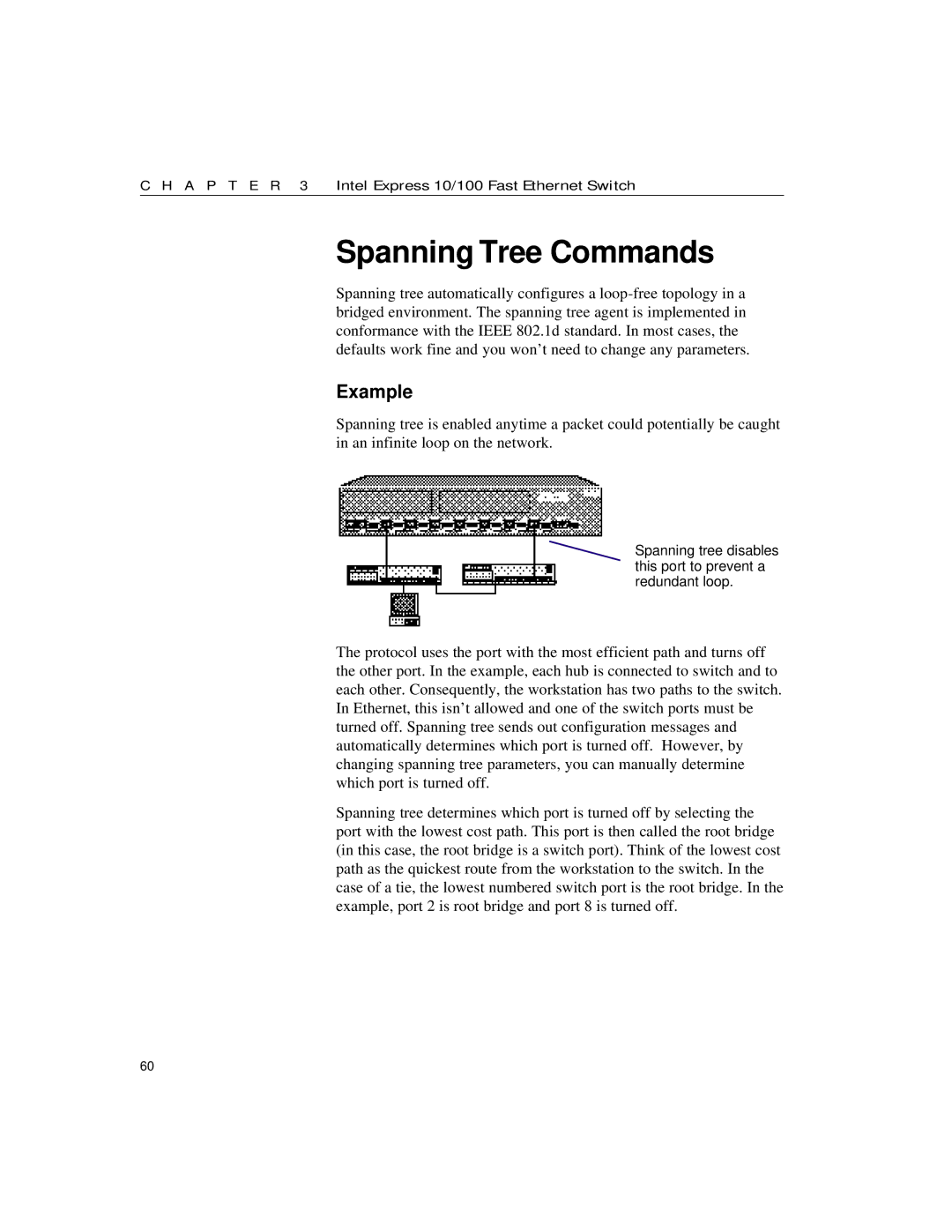
C H A P T E R 3 | Intel Express 10/100 Fast Ethernet Switch |
Spanning Tree Commands
Spanning tree automatically configures a
Example
Spanning tree is enabled anytime a packet could potentially be caught in an infinite loop on the network.
Spanning tree disables this port to prevent a redundant loop.
The protocol uses the port with the most efficient path and turns off the other port. In the example, each hub is connected to switch and to each other. Consequently, the workstation has two paths to the switch. In Ethernet, this isn’t allowed and one of the switch ports must be turned off. Spanning tree sends out configuration messages and automatically determines which port is turned off. However, by changing spanning tree parameters, you can manually determine which port is turned off.
Spanning tree determines which port is turned off by selecting the port with the lowest cost path. This port is then called the root bridge (in this case, the root bridge is a switch port). Think of the lowest cost path as the quickest route from the workstation to the switch. In the case of a tie, the lowest numbered switch port is the root bridge. In the example, port 2 is root bridge and port 8 is turned off.
60
